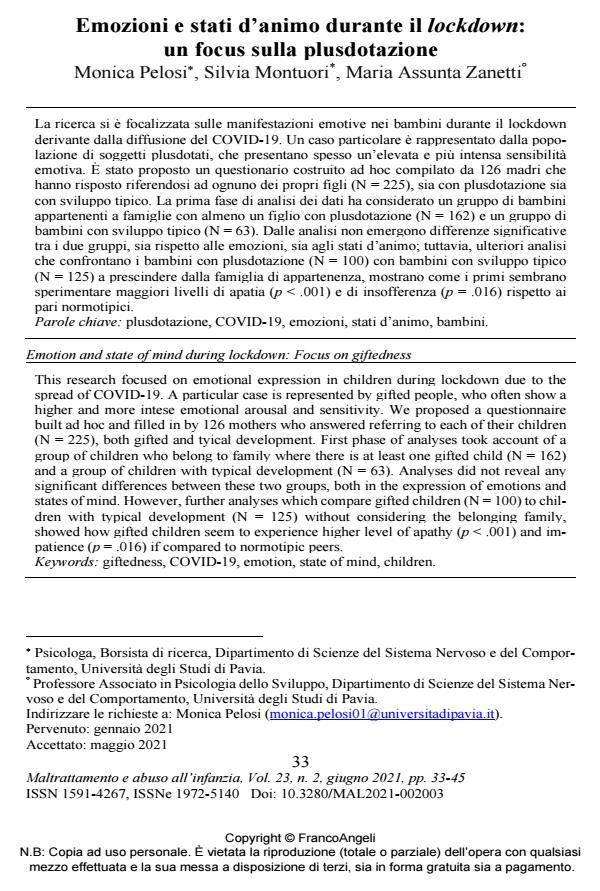Emotion and state of mind during lockdown: Focus on giftedness
Journal title MALTRATTAMENTO E ABUSO ALL’INFANZIA
Author/s Monica Pelosi, Silvia Montuori, Maria Assunta Zanetti
Publishing Year 2021 Issue 2021/2
Language Italian Pages 13 P. 33-45 File size 168 KB
DOI 10.3280/MAL2021-002003
DOI is like a bar code for intellectual property: to have more infomation
click here
Below, you can see the article first page
If you want to buy this article in PDF format, you can do it, following the instructions to buy download credits

FrancoAngeli is member of Publishers International Linking Association, Inc (PILA), a not-for-profit association which run the CrossRef service enabling links to and from online scholarly content.
This research focused on emotional expression in children during lockdown due to the spread of COVID-19. A particular case is represented by gifted people, who often show a higher and more intese emotional arousal and sensitivity. We proposed a questionnaire built ad hoc and filled in by 126 mothers who answered referring to each of their children (N = 225), both gifted and tyical development. First phase of analyses took account of a group of children who belong to family where there is at least one gifted child (N = 162) and a group of children with typical development (N = 63). Analyses did not reveal any significant dif-ferences between these two groups, both in the expression of emotions and states of mind. However, further analyses which compare gifted children (N = 100) to children with typi-cal development (N = 125) without considering the belonging family, showed how gifted children seem to experience higher level of apathy (p < .001) and impatience (p = .016) if compared to normotipic peers.
Keywords: Giftedness, COVID-19, emotion, state of mind, children.
- The Influence of Gifted Children’s Stress Management on Parental Stress Levels Maria Assunta Zanetti, Francesca Sangiuliano Intra, Livia Taverna, Antonella Brighi, Carlo Marinoni, in Children /2024 pp.538
DOI: 10.3390/children11050538
Monica Pelosi, Silvia Montuori, Maria Assunta Zanetti, Emozioni e stati d’animo durante il lockdown: un focus sulla plusdotazione in "MALTRATTAMENTO E ABUSO ALL’INFANZIA" 2/2021, pp 33-45, DOI: 10.3280/MAL2021-002003